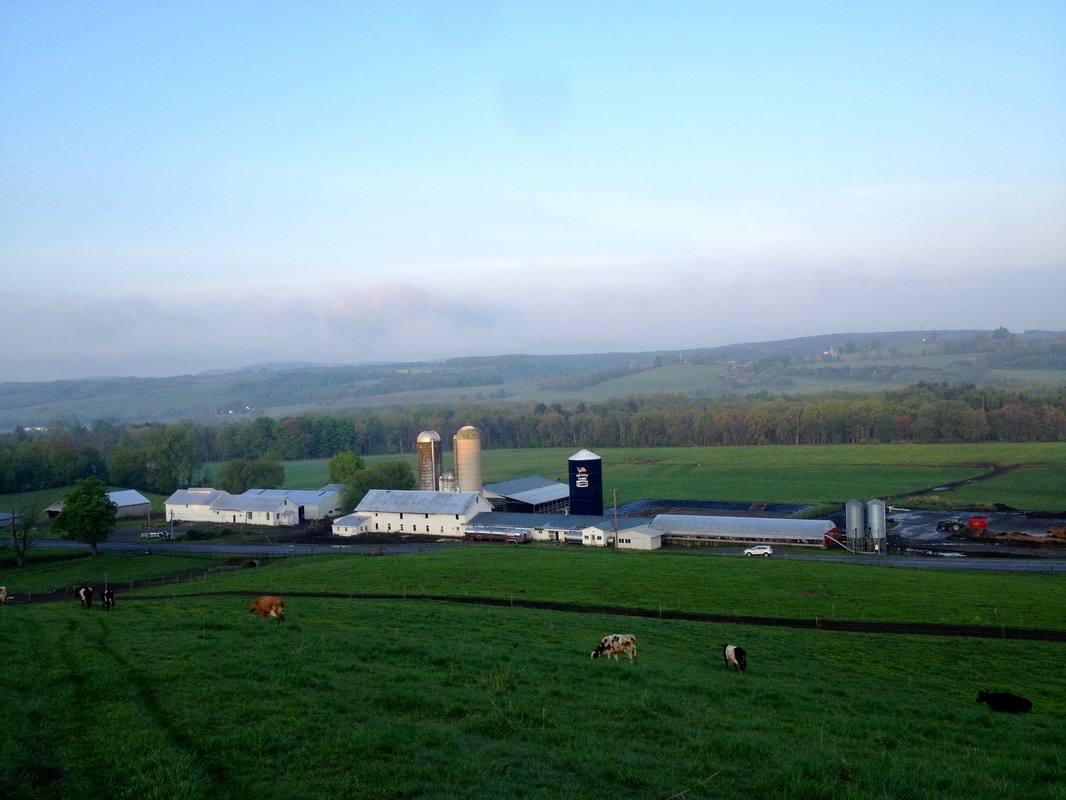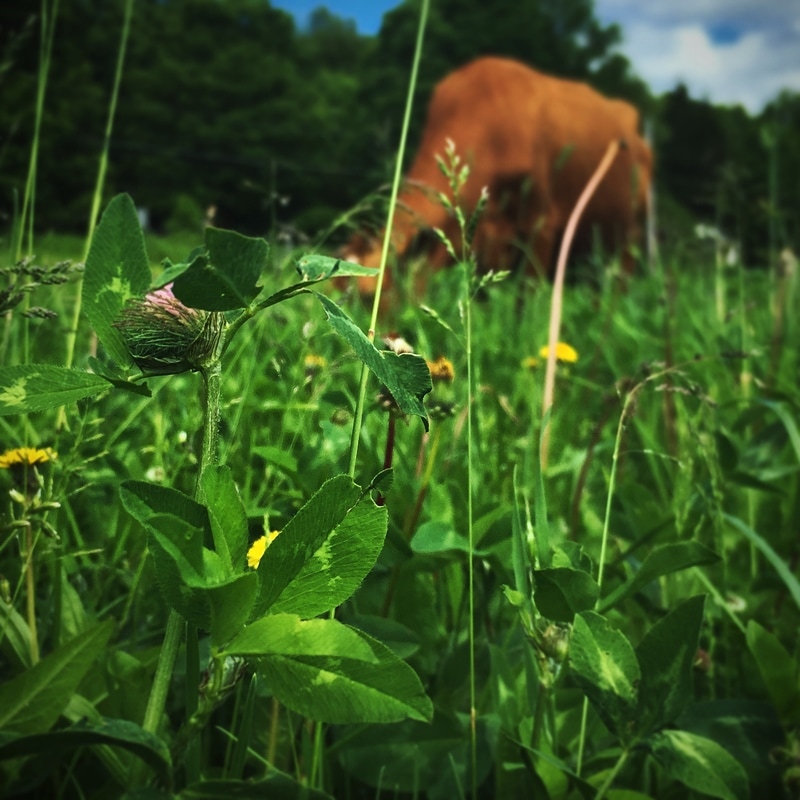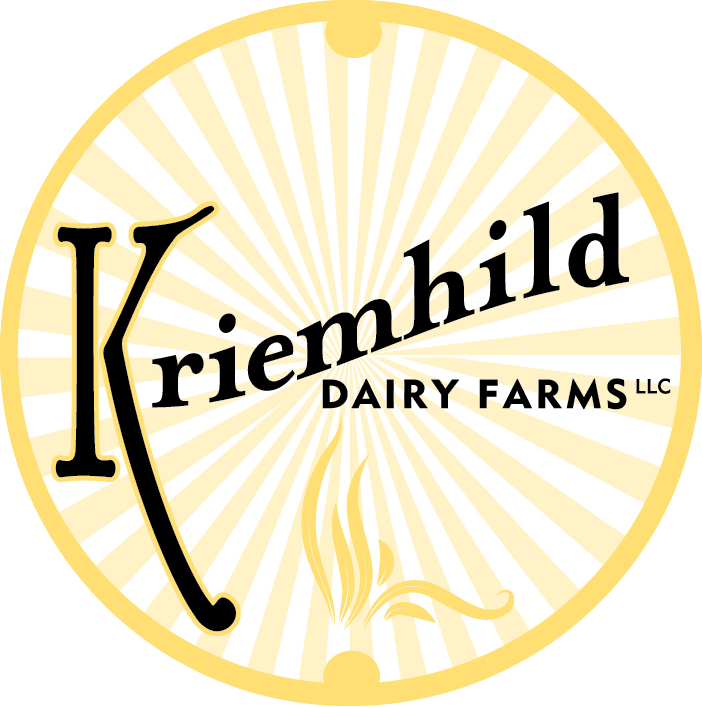|
If you haven’t learned by now, Kriemhild Dairy is intimately connected with Red Gate Farm, our sole seasonal Meadow Butter supplier. Farmers Bruce and Nancy Rivington own 90% of Kriemhild and have had an essential role in developing our values and guiding the direction of our small agricultural business. In fact, we all would consider being able to access and experience the farm a job perk: we get to interact with their beautiful, and curious, herd of cows, have walking privileges to the rolling pastures, and occasionally get roped into doing some farm work. You, or someone you know, might even be familiar with the farm. Kriemhild and Red Gate Farm often collaborate on farm events to encourage people to engage with the staff and animals who contribute to the production of their food. Red Gate hosted its first Calving Day this year, but many visitors’ first experience of the Farm is during Madison County’s Open Farm Day. Red Gate Farm has been participating in Open Farm Day for the 8 years the event has existed, this year will be no different. But, likely unbeknownst to visitors, 17 years ago, Red Gate’s rolling green pastures looked very different than they do today. From Canada to CNYWhen the Rivington Family moved from their dairy farm in Ontario, Canada to New York, they were on a clear-cut mission: to graze. The Rivingtons wanted to increase the amount their cows could graze, and ultimately switch to seasonal dairying for human and herd wellbeing. Although the Canadian supply management policies promised consistent revenue for Canadian dairy farmers, the system would not accept the variable amount of milk produced by a grazing seasonal dairy. With aspirations of expanding their farm and embracing seasonal grazing, the Rivingtons began to search the Empire State for their new home. Nancy and Bruce visited about 18 different farms hoping to find one that was suited for grazing. Mainly, they were searching for at least 400 acres of contiguous land so as to make it possible to move a herd easily from one pasture to the next. This was more of a challenge than expected. “Real estate agents have real funny definitions of contiguous,” Bruce recalls. It was in the depths of winter when the Rivingtons were introduced to Red Gate Farm. Although the land was buried in snow, the Rivingtons knew it was the farm they were looking for. They bought the farm in 2000. Red Gate Farm was a dairy farm historically, but most of its 512 acres had been in conventionally managed corn and alfalfa crops for almost 3 decades. Although rotating corn and alfalfa crops is an effective practice for those who strive to grow an abundance of those two crops, this type of management can take its toll on the land. Bringing Back The Grass Growing a single or limited amount of crops on the same land quickly depleted the soil of its fertility, making it necessary to apply chemical fertilizers to just as quickly supply the exact amount of nutrients the crop needed. Repeated tilling and cultivating also deteriorated the soil. This practice released soil nutrients into the air and broke up the roots and aggregates that held the soil together, increasing the rate of erosion. Bruce remembers discovering the poor condition of the soils, “When we first bought the farm we had to hunt to find an earthworm.”
Despite its sorry condition, Bruce and Nancy knew the healing effect that grazing could have. So, the Rivingtons gave the Red Gate Farm fields their last tilling ever, only to plant an abundance of perennial grass seeds. Starting with a small herd, they gently grazed and mowed the grass to encourage root growth and carbon sequestration. After 5 years of careful and nurturing management, Red Gate Farm began to resemble the farm we all know today: 737 acres of lush green grass carpeting miles of land speckled with colorful moseying cows grazing at their leisure. Even the section of field burned with pesticides was regenerated, and now is ironically one of their most productive pasture, growing almost exclusively native grasses. “That’s the pasture I like to take people up to, to show them,” Bruce boasts. Land that Doesn't Just Work, But LivesThe Rivingtons did not merely transition Red Gate Farm from one crop to another. They reclaimed land stripped of its nutrients, only able to grow corn and alfalfa, and regenerated it into a thriving ecosystem. Their land not only grows nutrient dense grasses, but it also feeds an expansive community of soil microbacteria and microfauna, acts as a habitat for wildlife, and even mitigates greenhouse grasses.
Although this happened long before Kriemhild was established, we would not exist without Red Gate Farm, so we embrace it as part of our story. We hope to help other farmers tell their own similar stories as we grow. Until then, you can visit Red Gate Farm on July 29th as we celebrate Madison County’s Open Farm Day. It’ll be a great chance to learn more about how agriculture can be a pivotal point of community, nutritional, and environmental health.
39 Comments
Leave a Reply. |
As the Butter Churns
Author: Ellen Fagan and Victoria PeilaCategories
All
Archives
November 2019
|
Where our HEart is
|
FOLLOW US |
what our customers are saying"Thank you! Even though I'm 5 hours away...I can't live without you. Got my shipment today.
#kriemhildbutterlove" -- Jennifer in Mystic, Connecticut |
Copyright 2020 © Kriemhild Dairy Farms, LLC





 RSS Feed
RSS Feed